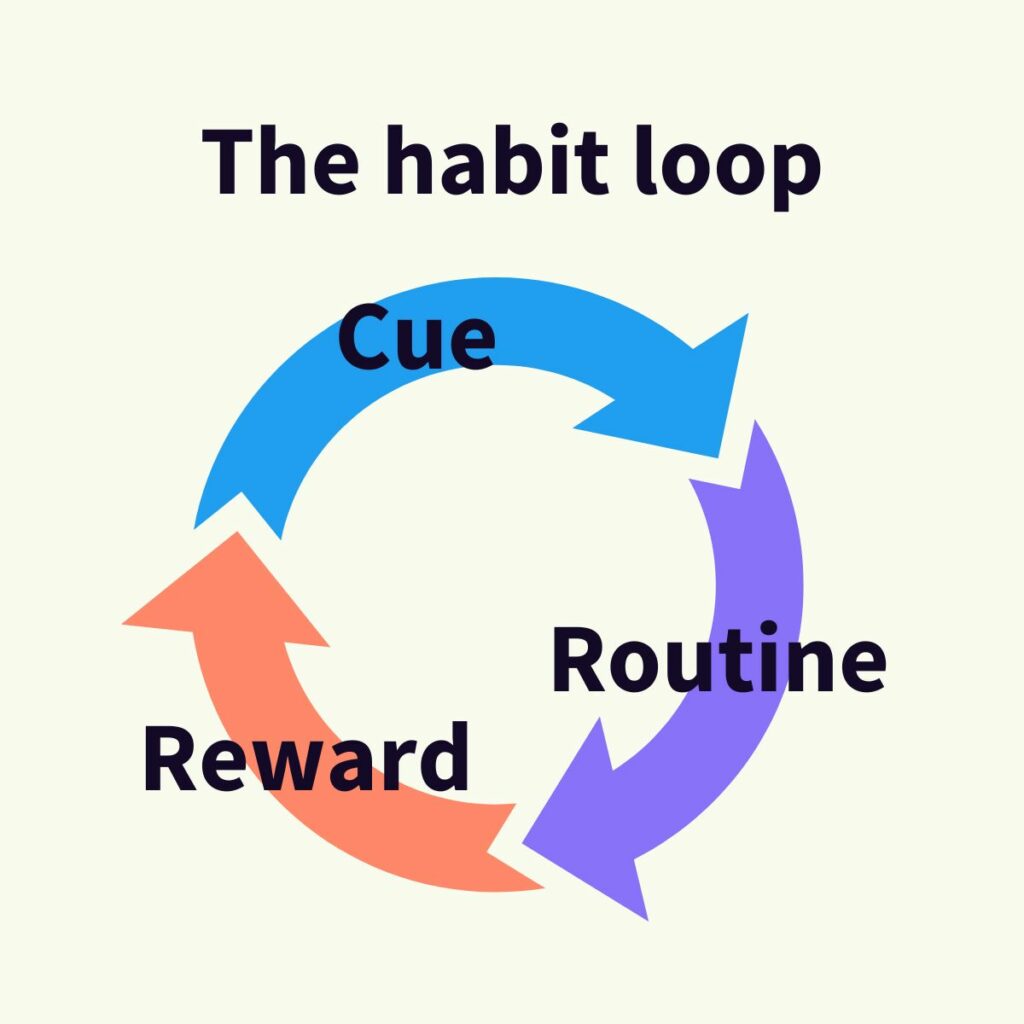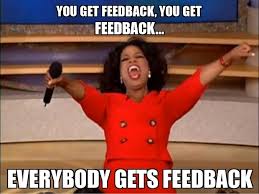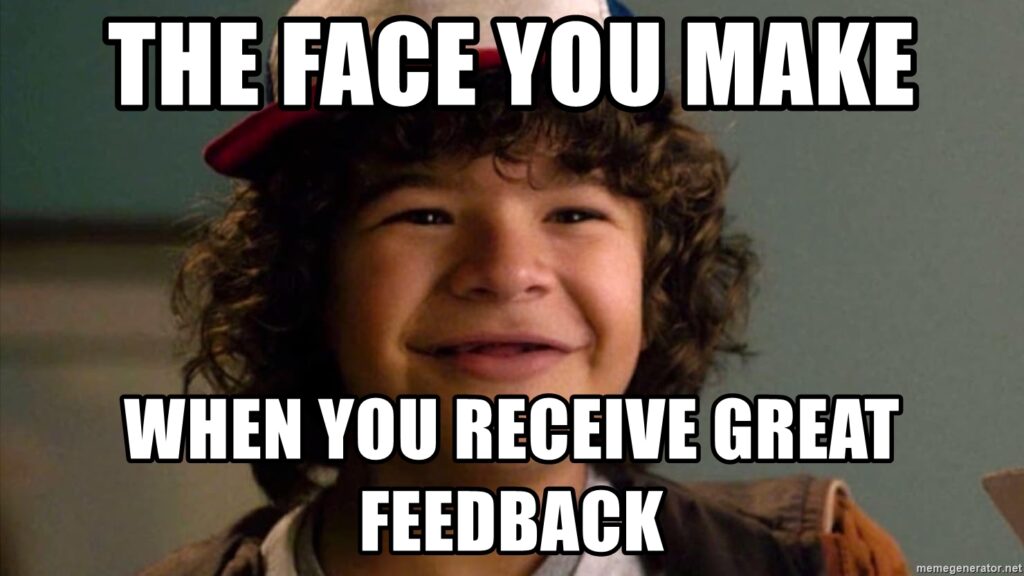Want to build the habit of sharing high quality, regular feedback? Continuous feedback is fuel for learning, growth, and top performers. You can use behavioral science to get on the right track fast.
The Habit Loop Explained
Back in the 1990s, researchers at MIT defined the “habit loop.” This loop describes the pattern our brain follows when we’re acting out a habit. By understanding this pattern, you can build new, positive habits.
The habit loop consists of three parts:
- The Trigger (or Cue): These are signals that tell our brain it’s time to start the habit
- The Routine: This is the habit itself
- The Reward: This is the benefit you get from doing the habit

Cues for Feedback
Sharing feedback can seem hard. You and your team may have Feedback Baggage to Unpack.
But if you don’t share feedback now, you’ll face MUCH bigger problems later. Think: difficult PIPs, tense relationships, surprises at performance reviews, top performers leaving, and open conflict.
You don’t want to wait for cues like those to give feedback. Instead of creating dumpster fires, create a proactive feedback habit with positive cues.

There are five types of cues you can use to build a feedback habit:
- Time
- Emotion
- Location (or Context)
- Preceding Action
- Other People
Time Cues
We live by our calendars at work! Use your calendar to schedule a specific time for feedback and recognition. Or set an agenda item in a regular meeting.
- Schedule examples: Schedule 5 minutes every Monday morning to give praise to team members or use Tandem’s Rituals feature
- Agenda examples: Use the first 5 minutes of your 1:1s with colleagues to ask for feedback. You can use Tandem to request feedback in advance so they aren’t caught off guard
Location Cues
Location cues involve giving feedback when you’re in a specific place or doing a certain task.
- Example: When reviewing dashboards or metrics, use this time to share feedback
- Example: Use a tool like Tandem, which is built into where you work, to prompt feedback
Emotion Cues
Avoid using negative emotions as feedback triggers. Instead, focus on sharing praise when you feel excited or proud about someone’s work. Instead of giving a passing, “Great job” write the positive feedback down so that the message sticks!
- Example: Write someone a short message and leave it on their desk or use Tandem’s Share feature to write it for you
- Example: Use Tandem Shout-outs to public praise teammates and add values
Preceding Action Cues
Preceding action cues involve giving feedback right after something has just happened.
- Example: After a meeting, make it a habit to ask for feedback
- Example: After a one-on-one meeting, use feedback tools to document and share what was discussed
Other People Cues
Other people can support a habit. That’s why Tandem helps companies build a feedback culture.
- Example: Spend the first 5 minutes of a meeting giving shout-outs in a team channel. This way, everyone can see, appreciate, and track the positive feedback. You can use Tandem’s praise feature
- Example: In your leadership meeting, dedicate the first few minutes to sharing or requesting feedback. This sets the tone for the entire company
Feedback Routine
When it comes to giving and receiving quality feedback, there’s so much research and advice that it can be hard to see the forest through the trees. The average employee or manager doesn’t have time to research the right framework or catch up on behavioral science.
What’s important is making the routine as easy as possible. Some quick ways to do this are:
- Using validated frameworks like SBI and the GROW model,
- Training team members on best practices, and
- Giving people support in preparing feedback
Tandem gives employees access to all of the above right where they work in Slack. Employees can also use Tandem’s magic AI features to write professional feedback and draft scripts that land well. Managers can draft performance evaluations with the click of a button.
Rewards of Giving Feedback
Now for the reward part of the habit loop. You might wonder, “What IS the reward for giving feedback regularly?!”
Believe it or not, there are a lot of benefits. To name a few…
- Trust-Building: Builds trust with colleagues through honest communication, especially our Genz teammates who want different performance management
- Recognition: Teammates feel appreciated and can understand their strengths
- Time-Saving: Saves time during 360 reviews and performance evaluations; not to mention avoiding time-sucking personnel issues like PIPs, conflict, and underperformance
- Early Problem-Solving: Catches performance issues before they become major problems and avoids surprises during reviews and at promotions
- Skill Development and career growth: Develops important skills and accelerates how quickly people reach their potential and progress in their careers

It’s key to reinforce a culture of feedback with tangible rewards. Here are some ideas:
- Spotlight a team member who’s received shout-outs each company meeting
- Share your feedback leaderboard and give a gift card to the top 5 people investing in feedback each month
- Give managers a budget to celebrate teammates who improve after receiving constructive feedback
- Award a monthly company prize to the person who best demonstrates a growth mindset
Create Your Feedback Habit Now
Here’s what you can do to get started:
- Set Up a Cue: Schedule 10 min each Friday to ask for feedback, share feedback right after meetings, or use the first 5 min of team meetings to share praise
- Start Small: Share praise about one teammate or ask one colleague for feedback this week
- Build a Positive Feedback Bank: Gradually accumulate positive feedback to create the right environment for the tougher stuff
By understanding and applying the habit loop to feedback, you can turn feedback into a regular, valuable part of your team’s routine. Start small, be consistent, and watch your team grow and improve. If you’re stuck, check out Why Your Feedback Habit Isn’t Sticking.
Want help building the habit of feedback? Try Tandem for free – 30 day trial, no credit card required.
